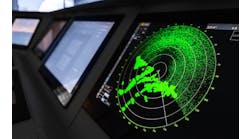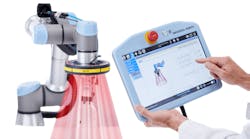Presence sensing is a broad topic that entails both object detection and machine guarding. Choosing the right device always entails some forethought, especially when installing it in difficult-to-reach or hazardous areas. Our panel of experts tells you what you need to know.
What sensor recommendations would you make for object detection in a machine where maintenance would be infrequent and difficult?
Bruce Fink, product manager, IDEC: It has been my experience that sensors such as photoelectric and inductive sensors are extremely reliable. These sensors, when installed correctly and designed in the application, can operate properly for a long time. When the environment that the sensors are installed in is consistent, the operation can be stable and provide for low maintenance. This would include factories, offices and components in machines. If the environment changes frequently, due to increased dust, dirt, moisture or humidity, the sensors can easily provide false readings that may require maintenance. This may be in applications that are outdoors or high-moisture areas. The reliability of photoelectric and inductive sensors is high and can be used in many areas where maintenance would be infrequent and difficult.
For example, some laser measurement sensors with IO-Link provide excess gain data via IO-Link, which can be used to identify when a sensor requires cleaning. Alerts can be set up so that sensors can be cleaned before the buildup of debris impacts their sensing functions. Device-connection issues are also reported in real time, allowing them to be resolved in a timely manner.
In addition to providing valuable health outputs, IO-Link also allows users to track total runtime data to predict when to replace a device. With this information, sensors can be replaced during scheduled maintenance, avoiding unnecessary downtime.
Shawn Day, marketing manager, Balluff: When dealing with difficult or harsh applications, it’s recommended to select a sensor with value-add vs. a standard factory-automation sensor offering. For example select a C-slot cylinder sensor with silicone cable material to deal with hot areas where the cable is exposed to burn-through or select an inductive sensor with a protective high-temperature coating to deal with excessive weld-spatter debris. Selecting the correct sensor for the application is key to managing machine downtime.
In areas where maintenance is limited or infrequent, I would recommend looking at an inductive proximity sensor line. These are sensors that are for noncontact detection of metal targets. Inductive sensors are very robust; they withstand high shock and vibration while ignoring oil, dirt and lubricants. They also come in various housing sizes to accommodate specific application areas. If longer ranges are needed, a magnetic sensor line can be capable up to 60 mm of operating range when used with a magnet or magnetic target. Both inductive and magnetic field sensors are great alternatives to mechanical detection devices that frequently result in failure due to their mechanical natures and movements.
Use an inductive sensor if you need high speed, noncontact response with a PNP/NPN discrete or 4-20-mA analog output.
Use an electromechanical limit switch for slower-speed targets you can touch and also if you do not have a power supply or if you need to directly switch a high voltage and current load.
John Murphy, product manager, sensors, Turck: For an application where it’s difficult to access a sensor, it’s a good idea to look for a sensor with a rugged design and one that can survive the physical and environmental extremes of the application. Another choice would be to incorporate a sensor with IO-Link capabilities. These units have functionality where a user can review its performance, and schedule and plan maintenance. This advantage could lessen unexpected and costly downtime.
Matt Simms, business development manager, sensors, Eaton: Every sensor design involves a balance of performance and price. In application situations where machine maintenance is infrequent and access to sensors is difficult, it is best to choose a sensor higher on the performance scale in order to improve operating survivability.
The element of sensor performance that needs to be more robust will vary depending on the nature of the application environment. In some applications, the presence of water, oils, cutting fluids or other chemicals demands a sensor built with additional features to physically survive in such an environment.
In other applications, the presence of intense electrical or electromagnetic fields demands a sensor with additional capability to withstand such fields and continue to operate. Still other equipment operates in environments where airborne contaminants create interference with optical sensors; in those cases sensor survival depends on having additional optical power to burn through those contaminants.
Tim Kelly, vice president of U.S. sales, Tri-Tronics: Sensor selection is target-dependent, so that really depends on a great number of factors. Remote teach sensors, IO-Link type or any bussed sensors that can communicate information back and forth to a control would help in a situation where the device is buried deep in the bowels of the machine.
Many current, smart sensors are already equipped with IO-Link, which is becoming more of a desirable communication method. There are no extra wires to install, and all the communications come up and down the output wire, so you can utilize the same wiring as any standard sensor.
Other simple-to-use five-wire devices oftentimes have remote setup capabilities. These sometimes use a proprietary code that is simple to customize and make very secure through handshaking-type words, protected by complex algorithms and rolling passwords.
There are very many types of communication methods, too—as many as there are sensing technologies. However, IO-Link seems to be very easy to implement, and many sensor companies have adopted it. We very well may have found our one-size-fits-all in this case.
Jack Moermond, marketing manager, Balluff: Photoelectric sensors provide the ability to detect objects from a longer distance, as opposed to inductive or capacitive proximity sensors, sometimes allowing them to be mounted in easily accessible locations.
That being said, some applications do require that sensors be located in space-restricted areas. In those instances, a sensor with a remote amplifier and sensing head may be the solution. This combination removes the electronics from the harsh or inaccessible locations, leaving the sensing head, which typically can be disconnected and more easily replaced.
Also, selecting the right light source, which in this case would be an infrared type sensor, is imperative for reducing unplanned shutdowns due to dirty lenses or reflectors.
Ideally a sensor that would provide diagnostic and predictive maintenance information would be used for these applications.
A notification can be sent to the operator or maintenance person so that corrective actions can take place during planned downtime. Also, internal operational timers can be set to remind maintenance personnel that the sensor should have preventive maintenance, such as cleaning lenses or reflectors, performed.
Capacitive proximity sensors, similar to inductive sensors, are designed to detect objects at very close ranges, typically less than 30 mm. In cases where the amplified versions cannot be utilized, the best recommendation would be to pick the right housing for the application. Stainless steel housings provide a robust solution to harsh environments. Teflon housings are ideal for applications that have aggressive chemicals.















